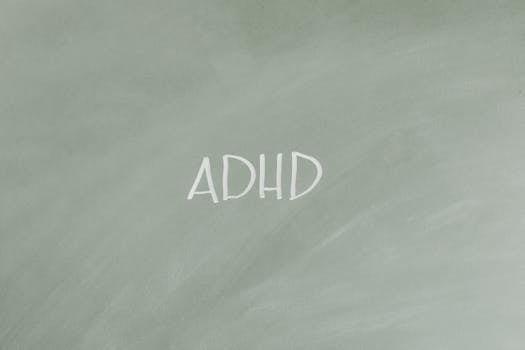What is hyperactivity behaviors?

What is Hyperactivity Behaviors?
Hyperactivity behaviors are often perceived through a lens of misunderstanding and stigma. Defined simply, hyperactivity involves excessive movement, impulsive actions, and a shorter attention span. These traits can have significant implications in daily life, especially concerning productivity and personal development. Understanding these behaviors can help demystify their effects and foster better management techniques.
Understanding Hyperactivity Behaviors
Hyperactivity behaviors encompass various traits that manifest through a person’s actions and interactions. They are commonly associated with Attention-Deficit/Hyperactivity Disorder (ADHD), a condition recognized for its persistent patterns of inattention and hyperactivity-impulsivity. While most people can recognize hyperactivity, misconceptions abound about its nature and effects.
Characteristics of Hyperactivity Behaviors
Several key characteristics define hyperactivity behaviors:
-
Impulsivity: Individuals may act without thinking, leading to hasty decisions. For example, a student might blurt out answers in class without raising their hand.
-
Restlessness: A constant need to move, whether tapping fingers, shifting in a seat, or pacing, is common. This restlessness can disrupt classroom or workplace environments.
-
High Energy Levels: People exhibiting hyperactivity often display more energy than their peers. This energy can sometimes be channeled positively into sports or creative endeavors.
These behaviors can impact various aspects of life, from academic performance to workplace productivity.
Common Misconceptions about Hyperactivity
There are several myths surrounding hyperactivity behaviors, often leading to mislabeling and misunderstanding.
-
Myth: Hyperactivity is a phase. Many believe hyperactive behaviors are just a phase of childhood. In reality, for some, these traits persist into adulthood.
-
Myth: All hyperactive individuals have ADHD. While ADHD is a common cause of hyperactivity, not all who exhibit these behaviors have the disorder. Other factors can influence hyperactive traits.
-
Myth: Medication is the only solution. While medications can be effective, behavioral therapies and lifestyle changes often yield significant improvements and should also be considered.
For a deeper understanding of hyperactivity, resources like Healthline provide valuable insights into its causes and management.
Causes of Hyperactivity Behaviors
Understanding what contributes to hyperactivity behaviors is crucial. These factors can be biological, environmental, or psychological.
Genetic Factors
Research shows a strong genetic component in hyperactivity behaviors. Families with a history of ADHD or similar conditions often see these traits manifest in children. The interplay of multiple genes can influence how impulsivity and attention span develop, making genetic predisposition a substantial factor in understanding hyperactivity.
Environmental Influences
Environmental factors can also play a significant role in the development of hyperactivity behaviors.
-
Diet: Studies suggest that certain dietary choices, such as high sugar intake or additives, can exacerbate hyperactivity in some individuals.
-
Family Dynamics: A chaotic home environment may increase stress in children, potentially worsening hyperactive behaviors.
-
Educational Settings: Schools that fail to accommodate diverse learning styles may inadvertently trigger or escalate hyperactivity in students.
For a more comprehensive view on these influences, the Mayo Clinic offers valuable insights.
Impact of Hyperactivity Behaviors
Hyperactivity behaviors can profoundly affect daily life, shaping work, study habits, and interpersonal relationships.
Effects on Productivity
Hyperactivity can be a double-edged sword regarding productivity. On one hand, high energy levels can lead to bursts of creativity and enthusiasm, motivating individuals to tackle projects passionately. On the other hand, impulsivity and restlessness can disrupt focus and hinder task completion.
To manage these effects, individuals can employ techniques like the Pomodoro Technique, which allows for focused work sessions followed by short breaks. This structured approach can help maintain attention while accommodating the need for movement.
Relationship Dynamics
Hyperactivity behaviors can also complicate relationships. Friends, family, and coworkers may misinterpret impulsive actions as recklessness or insensitivity. This misunderstanding can strain relationships, leading to frustration or resentment.
Open communication is essential. Discussing hyperactivity behaviors with loved ones can foster understanding and create a supportive environment. Resources like Child Mind Institute can provide further guidance on navigating these relationships.
Strategies for Managing Hyperactivity Behaviors
Effectively managing hyperactivity behaviors can enhance personal development and productivity. Here are some strategies to consider:
Time Management Techniques
Implementing effective time management techniques can help individuals harness their energy productively:
-
Set Clear Goals: Establish specific, achievable objectives for each day.
-
Prioritize Tasks: Use tools like to-do lists to focus on the most important tasks first.
-
Break Tasks into Smaller Steps: Smaller, manageable tasks can prevent feelings of overwhelm and help maintain focus.
Effective Study Habits
For students or lifelong learners, adapting study habits can significantly enhance focus and retention:
-
Create a Study Schedule: Consistent routines help structure study time and minimize distractions.
-
Incorporate Movement: Short breaks for physical activity can refresh the mind and help refocus attention.
-
Use Visual Aids: Charts, diagrams, and other visual tools can help reinforce learning and maintain engagement.
By implementing these strategies, individuals can develop a more productive and satisfying daily routine.
Conclusion
Hyperactivity behaviors are complex and multifaceted, impacting various aspects of life. Understanding these behaviors—characteristics, causes, and their implications—can lead to better management and improved productivity. Recognizing hyperactivity’s nuances allows us to foster a more supportive environment, whether at home, school, or work. By employing effective strategies, we can turn potential challenges into opportunities for growth and success.